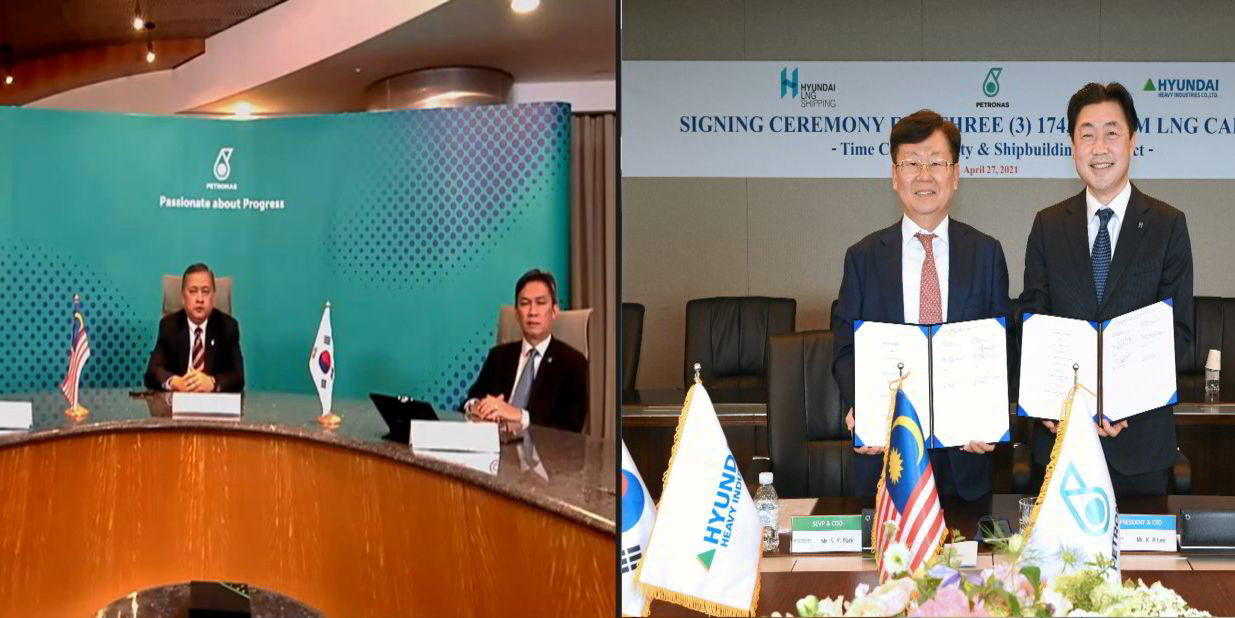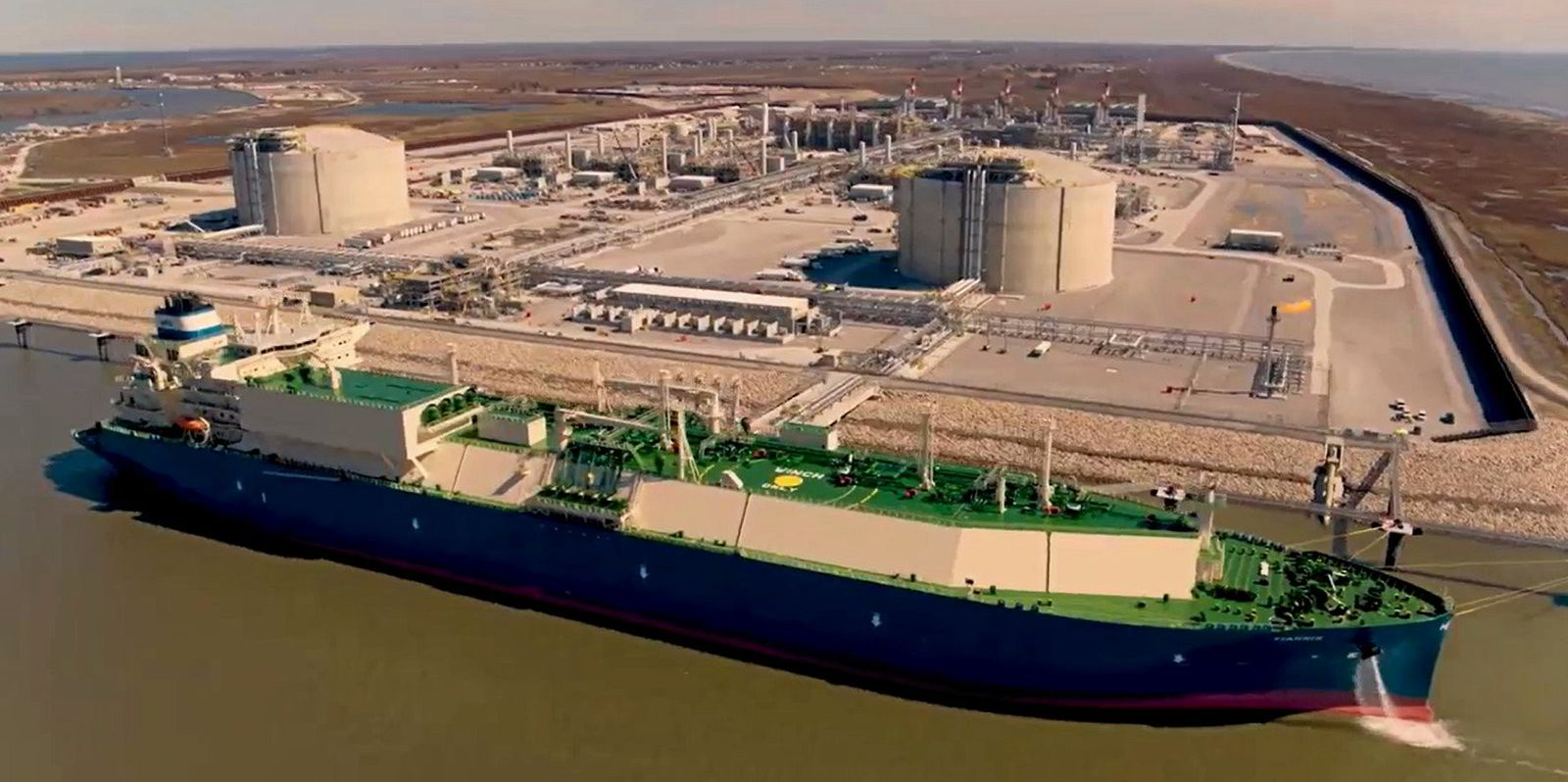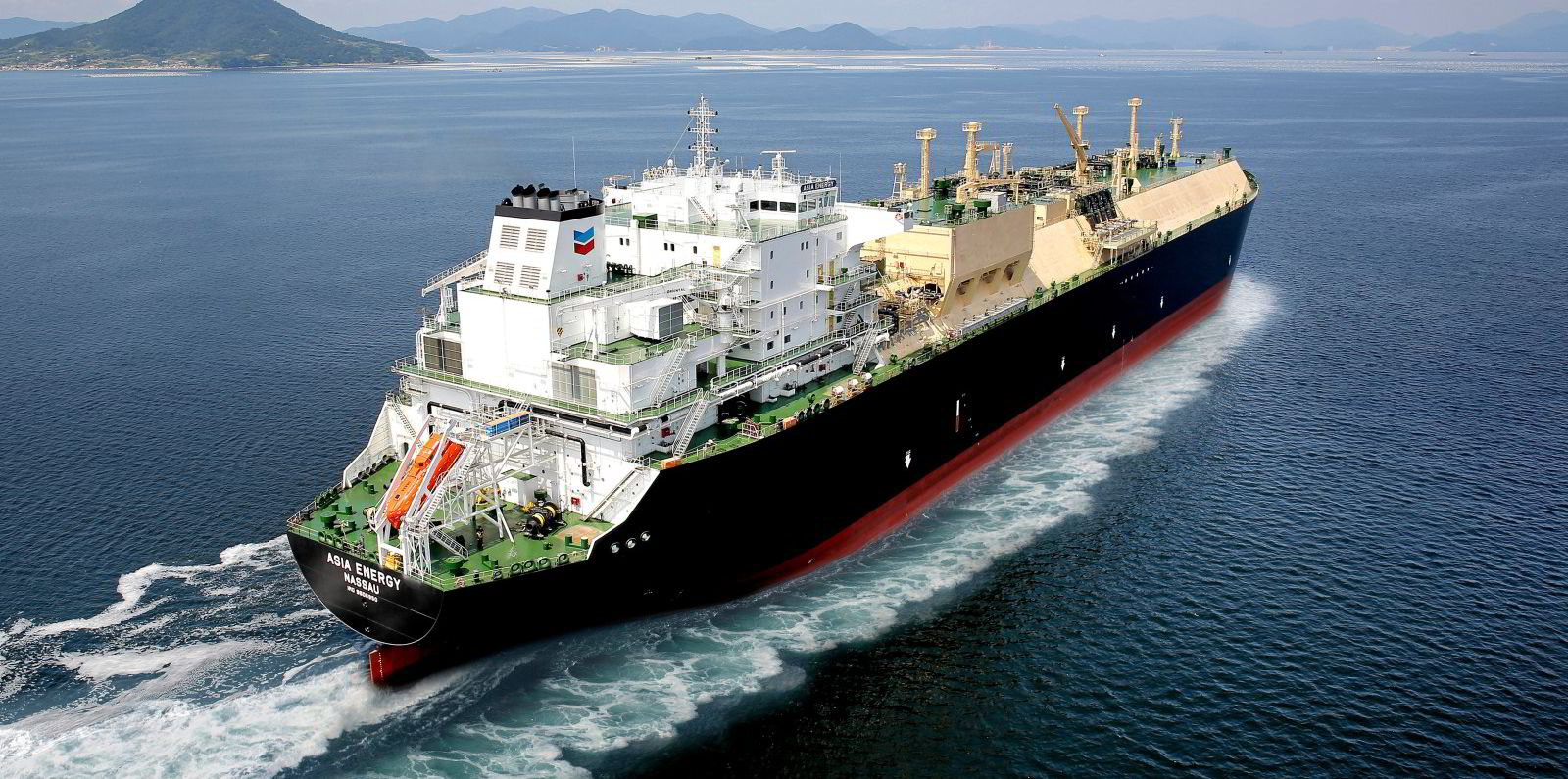US energy major Chevron is making enquiries with shipbuilders for up to six LNG carrier newbuildings as it looks to provide tonnage to cover the new volumes it added to its portfolio in 2022.
Multiple sources have detailed to TradeWinds that Chevron has approached shipyards for four firm vessels with options on a further two.
Few specifications have emerged and yards appear to be particularly tight-lipped on the business.
Chevron does not traditionally comment on its commercial shipping activity.
Those following this new business closely point to the two LNG sale-and-purchase agreements (SPAs) signed by Chevron in 2022 as among the reasons why the major is back at the yards for tonnage.
In June last year, Chevron inked two SPAs with Cheniere Energy to buy 2 million tonnes per annum of LNG in total from the US liquefaction producer’s Sabine Pass LNG and Corpus Christi plants over 15-year periods. These purchases ramp up from 2026 into 2027.
Separately, in the same month, Chevron also signed a pair of SPAs with Venture Global LNG for a further two mtpa of LNG over 20-year periods. Under these, Chevron is buying 1 mtpa from Venture Global’s Plaquemines LNG facility and the same amount from the developer’s planned CP2 LNG plant.
In addition, observers said Chevron would likely be looking at acquiring slightly larger and more efficient vessels to ship its LNG.
They added that the US major’s enquiry will only add to the pressure on shipyard berths for LNG carriers, where about 100-plus vessels are anticipated to be contracted this year.
Prices are nudging towards $260m per vessel, and slots in 2027 are limited by those pre-reserved for QatarEnergy and Mozambique LNG with major portfolio players and buyers from US projects expected to compete for remaining berths.
Chevron operates a mixed fleet of owned and operated LNG carriers.
The major has several preferred shipowners with whom it has had long chartering relationships over the years.
Chevron’s last approach to yards for LNG tonnage was more than 10 years ago.
This resulted in six 160,000-cbm LNG newbuildings — dubbed its “Asia-class” vessels — for the company that were delivered by Samsung Heavy Industries between 2014 and 2017.
In February, Chevron announced it was retrofitting its LNG carrier fleet with new technologies to help cut the carbon intensity of the vessels’ operations.
Singapore’s Sembcorp Marine is upgrading the ships and will install reliquefication systems, hull air lubrication and gas compressors to reduce cargo boil-off, lower fuel consumption and increase volumes of cargo delivered.
The work on the ships is due to be completed by mid-2025.
At the time, Chevron Shipping president Mark Ross said: “We believe LNG will be a key component of the global energy transition for years to come, and Chevron is focused on continuing its disciplined capital investment in our LNG fleet.”
Chevron is a member of the Singapore-based Global Centre for Maritime Decarbonisation and is also a signatory to the Sea Cargo Charter.
In late 2021, Chevron teamed with Singapore’s Pavilion Energy Trading & Supply and QatarEnergy on a new reporting methodology for providing a statement of greenhouse gas emissions for delivered LNG cargoes.







